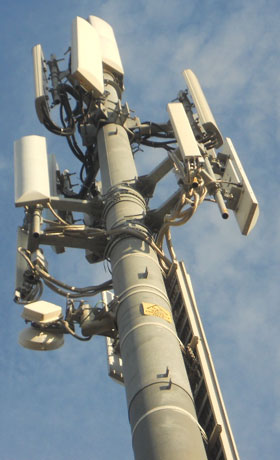 The Independent Communications Authority of SA (Icasa) wants to reassign large chunks of radio frequency spectrum for mobile and fixed-wireless telephony and broadband, a reading of its newly published draft national frequency migration plan shows.
The Independent Communications Authority of SA (Icasa) wants to reassign large chunks of radio frequency spectrum for mobile and fixed-wireless telephony and broadband, a reading of its newly published draft national frequency migration plan shows.
The draft plan proposes not only making a large chunk of spectrum currently used by television broadcasters available to telecommunications operators, but also proposes freeing up chunks of frequencies across the spectrum band.
Telecoms operators are itching to get their hands on frequencies below 850MHz — the so-called digital dividend bands — which will be freed up when broadcasters move to more spectrally efficient digital technology. This is expected to happen by mid-2015 at the latest, although the process has already been delayed many times.
The spectrum that will be made available immediately after migration is completed covers the frequencies from 790MHz and 862MHz. These bands are seen as crucial to rolling out broadband services more affordably because of the efficient way in which they propagate signals and also penetrate buildings.
However, Icasa has gone a step further in its draft plan, suggesting that a further chunk of spectrum be made available in the frequencies between 694MHz and 790MHz — sometimes referred to as “digital dividend 2” — for mobile broadband services. It’s currently occupied by broadcasters, which are using it for UHF television.
“Given that there is a current planned migration underway in the 790MHz to 862MHz band (due to be completely by 2015), a proposal would be to concurrently define and implement a migration plan for the 694MHz to 790MHz band as well,” Icasa says in the draft migration plan. “This would ensure that no new services are allocated for this band and the existing users have a finite and defined period to migrate.”
Icasa also wants the band from 862MHz to 892MHz, which is currently used for a range of purposes, including wireless alarm systems, to be reassigned for mobile broadband, forming a large contiguous chunk of spectrum between 694MHz and 892MHz that can be used for next-generation mobile broadband services.
The draft plan also proposes reassigning chunks of spectrum for operators wanting to provide broadband fixed-wireless access — in other words, wireless access in fixed locations as opposed to mobile services. The following bands are affected:
- 1 880MHz to 1 900MHz: This band was allocated to Telkom for Dect (digital enhanced cordless telecoms) services, which it used to provide wireless access in outlying parts of the country as part of its licence conditions after it was partially privatised in the 1990s. Depending on current utilisation of this band, Icasa wants to reassign it for broadband fixed-wireless access.
- 1 980MHz to 2 010MHz and 2 170MHz to 2 200MHz: Originally identified for use by mobile operators for accessing satellite services and for fixed links, these bands are underutilised and Icasa wants them reassigned for fixed-wireless broadband depending upon the availability of communications equipment.
- 2 025MHz to 2 110MHz, paired with 2 200MHz to 2 285MHz: This band is allocated for fixed links but is underutilised. Icasa has proposed migrating fixed links from other bands into this one, but if it remains underutilised, and depending upon demand and availability of equipment, it may allocate it to broadband fixed-wireless access in future.
Interested parties have until 28 September to submit written submissions on the draft plan. The document is available on Icasa’s website. — (c) 2012 NewsCentral Media




